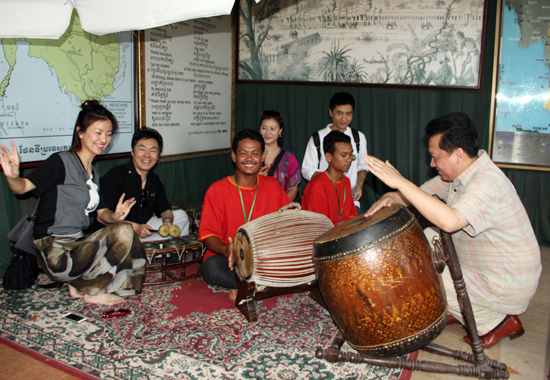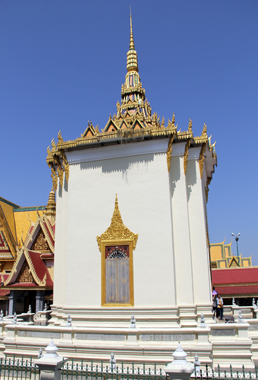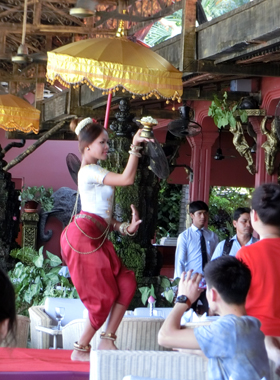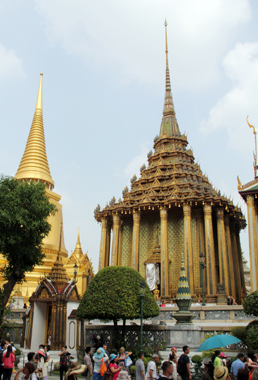The film Lost in Thailand brings people from China and Thailand closer in laughter while the film Smile of Angkor tells an international romance in reflection of the profound friendship and affectionate communications between China and Cambodia. Culture and arts, with a special power that work beyond the boundary and penetrate into heart imperceptibly so as to draw people of different nationalities together.
At the beginning of October this year, in the official visit to Malaysia, Chinese president Xi Jinping mentioned Fish Leong, a Malaysia-based singer in Chinese favorite; in the same month, Premier Li Keqiang also talked about the film Lost in Thailand in his visit to Thailand. Those above details indicate the importance of culture and arts in the international exchange and cooperation and the fact that cultural exchange has become a key carrier for information exchange and friendship continuation between countries and even in the world.
From October 28 till November 8, on the occasion of China-Cambodia Friendship Year, 55th anniversary of diplomatic relations establishment between China and Cambodia and the 38th anniversary of diplomatic relations establishment between China and Thailand, I joined CFLAC Art Troupe to fly more than 3000 kilometers from freezing Beijing to hot Bangkok and Phnom Penh to present 2013 China Today Arts Week sponsored by CFLAC. Besides the charm of arts, I vividly experienced the passion, courtesy and hospitality extended from local audiences in both countries and came to realize the truth that art is a carrier of emotion and a bridge between hearts without limitation of boundaries.
Despite linguistic barrier, arts communicated with hearts. Melodious music, graceful postures and splendid stage delicately presented by Chinese artists won the favor of local audiences. In each performance, the audiences would invariably offer thunder-like applauses at the interval to express their satisfaction. Many people even became the constant audiences in the two performances, and Ping, in her fifties, was just one of them. As she said, “your programs are so wonderful that I will not miss any”. Shocked by the acrobatic program Oriental Swan—Ballet on Hands, Pich, a university student of Cambodia, uttered several words such as “Incredible”, “Unprecedented”, “Marvelous” to express his excitement. To my surprise, though he knows not a single Chinese character, he was fascinated with Chinese songs.
I still recalled a touching scene before the premier performance in Thailand. While five Chinese musical instrumentalists were rehearsing the prepared Thai ballad Rain Lines, an employee couldn’t help singing this song as deeply moved by this familiar melody. Thus I heard an improvised concerto of China-Thailand friendship. “Our Thai people have a special liking for traditional Chinese music and our little princess can play the zither” this elderly continued joyously. Culture becomes abundant with exchange and colorful with integration. “ The cultural exchanges not only bring the local people in Thailand and Cambodia to a better knowledge of current development of Chinese culture and arts, but also help us to learn and absorb cultural and art nutrition from different cultural backgrounds” all the Chinese artists reached such a consensus when summarizing their unforgettable trip.
As a matter of fact, before my trip to Thailand and Cambodia, I was concerned with the language to hinder interview. However, I realized my worries were quite unnecessary because in Bangkok and Phnom Penh, many people can greet me with simple Chinese sentences and even some can talk to me in fluent mandarin.
Ping could communicate with me in her simple sentences. She told me that she was fond of Chinese culture and became a crazy fan for Chinese songs. Once she happened to hear a Chinese song in the radio and was immediately fascinated by the graceful melody. From then on, she began to find teachers for instructions on how to sing Chinese songs. According to her, there are many people like her in Bangkok, and her choir just consists of those similar persons. The choir will organize a group rehearsal once or twice a week for many Chinese songs such as Beautiful South of My Motherland, Ode to Wintersweet, Yellow River and Chinese Family. Through songs rehearsal, Ping learned Chinese language as well. She told us that along with the increase of China-Thai cooperation and exchange, Thai government attach more importance to Chinese lessons in schools and universities. Currently, most of schools will arrange Chinese lessons and more and more people can speak Chinese. It is the same with Cambodia. According to our guide Xiao Chen, many Cambodian people started to learn Chinese at a young age and now approximately 40 % of Cambodian people can speak Chinese.
In retrospect, the Chinese fashion, numerous scrolls of congratulations to China Today Arts Week and Chinese caption of “I love China” on the audience’s laptop… all of those made me feel their hearty affection to China, appreciation of Chinese arts, eagerness to visit China and gratitude towards Chinese artists. In the whole process of visit and exchange in Thailand and Cambodia, a bright smile, a kind wink or a series of applauses from local people would indicate their friendly attitude and hospitality towards Chinese people. We are delighted to find that integration and exchange of culture and arts have become a path to enhance understanding and friendship and achieve harmonious coexistence between Chinese people and their counterpart.


















